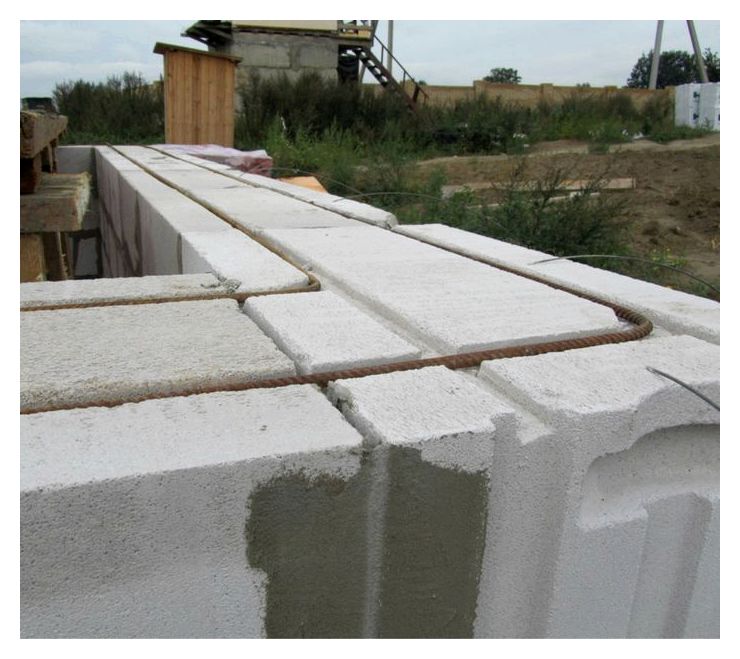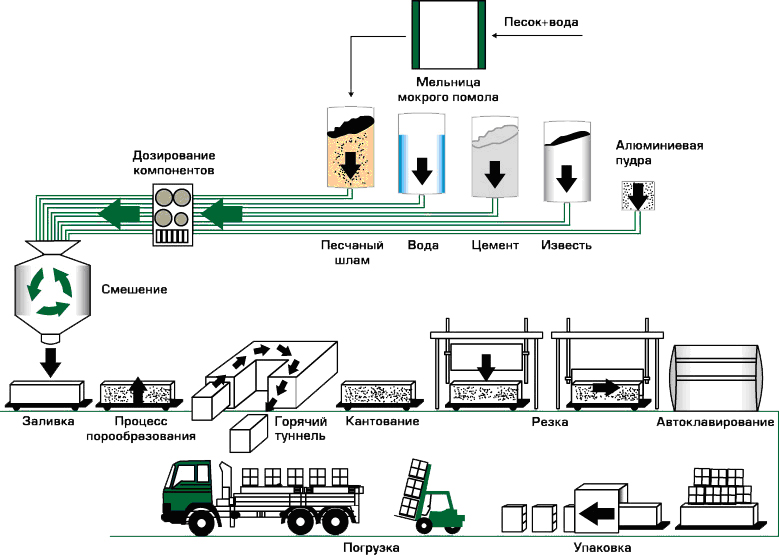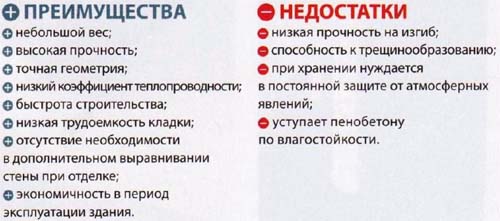For various types of construction without concrete it is indispensable. I use it for foundation pouring, as well as for monolithic construction. In addition, there are varieties of which make blocks for the erection of houses. Such concrete is called honeycomb and now we will tell more about it.
Content
Cellular concrete, varieties
Cellular concrete is an artificial porous building material that includes various astringent and siliceous aggregates. Like other materials, cellular concrete has its own varieties.
varieties of cellular concrete
There are two types of cellular concrete:
- foam concrete;
- aerated concrete.
For the production of aerated concrete in the cement solution add components promoting gas generation, quite often it is aluminum crumb. After mixing, a chemical reaction occurs between the powder and the hydrate of the cement, after which hydrogen is released to promote the appearance of pores. The whole process is like the growth of a yeast test. When the material freezes, the pores remain. Foam concrete is obtained as a result of mixing cement mortar and special foam. The latter is evenly mixed with the volume of the solution, after hardening, concrete with pores is obtained. Depending on the number of pores, cellular concrete may have good or not very sound-insulating properties.
By appointment, this material can be:
- Insulating - a light, porous and warm material with a density of 400 - 600 kg / m3. It is widely used for thermal insulation of walls, floors, ceilings, and pipelines.
- Thermal insulation - structural - it is more dense and durable. This allows it to be used for building and manufacturing blocks for private housing construction. The density of this variety is 600 - 1200 kg / m3. It is necessary to understand that because of the high density the heat-insulating properties of the material suffer.
Technological features of cellular concrete
For private housing construction foam blocks are widely used. After preparing the mixture, various shapes are molded from it. The material allows you to make wall blocks, slabs, bridges and even slabs. In molding technology, products are molded into molds. The casting mixture contains 50% water by weight of the other constituents. In the production of aerated concrete sand sand, astringent components and water are used. They are supplied in limited quantities to a gas mixer, where the mixture is mixed for 5 minutes. After that everything is poured into molds (made of metal) up to the established height, then it will fill up to the top during the swelling process. Overflowed mixture is removed by strings of wire. Then the material must be allowed to settle and grab it completely. After that, you can build various auxiliary buildings or a house.
Pros and cons of cellular concrete
When building a house, many people think about the choice of material. Now let's talk about the merits and demerits of cellular concrete.
The positive qualities include:
- Ecological - in its composition and safety it can be compared with a tree. Good thermal insulation properties of the material allow it to be used in different regions, besides the material regulates the humidity in the room due to its structure.
- Building properties - masonry of similar blocks is possible with minimal seams. Due to the variety of dimensions, it is possible to erect both load-bearing and interior partitions.
- Fire safety - the material is not flammable and is able to prevent the spread of flame.
- Sound insulation - thanks to the porous structure, high sound insulation is achieved.
- Thermal insulation - the presence of air in the pores of the blocks determines the high thermal insulation properties. The material is able to smooth out changes in temperature during the day, both in summer and in winter. In addition, the material is able to accumulate heat and give it away, this feature will save on heating.
- Workability - cellular concrete is easy to saw, cut and drill. This allows you to make any architectural designs.
- Economic indicators - a wall of this material is three times less than the price of a brick.
The disadvantages of cellular concrete are:
- Low fracture toughness, that's why it's necessary to build a house from it on a strip foundation or a base made of simple concrete.
- The porous structure promotes the penetration of moisture from the environment into the material and, as a consequence, its deterioration. Therefore, outside the wall must be plastered or bricked, or facade tiles.
Now you know all the strengths and weaknesses of cellular concrete and will be able to determine the choice of material for the erection.
Cellular concrete in construction
This material has recently been very popular. At the construction site blocks of cellular concrete are delivered on pallets, as well as ordinary brick. Unload the material on a flat surface protected from flooding. If you do not plan to immediately put the walls on the sides of the block packs, you need to cut the film. This way the material will breathe, and the sheltered top will not let it get wet in the rain. If it gets hot in the street, you can sprinkle them with water.
cellular concrete
The erection of the building begins with the construction of the first row of blocks on the foundation. Work is conducted from the corners and run in rows along the entire perimeter. And the height and the horizontal of the rows should be adjusted with the help of plumb bows and a stretched cord. At the very beginning of the work, it is necessary to check the horizontal level of the foundation and, when the blocks protrude, level the surface, a deviation of not more than 3 cm is allowed. After that, you need to think over the waterproofing of the basement. To do this, you can spread the roll waterproofing in several rows with an overlap of about 15 cm. Before laying the blocks are carefully inspected and cleaned, the material with damages is laid aside.
When stacking blocks in a row it is necessary to observe a clear width of joints when laying on a mortar:
- horizontal - 1 - 1.5 cm;
- vertical - 1 cm.
When using a special adhesive, their thickness can be 2 mm. After the completion of the first row, it is necessary to evaluate its evenness and, if necessary, to hang convex parts.
To strengthen the walls of the house, it is possible to make grooves in the blocks and lay the reinforcement there. Thus strengthen the first row and every fourth. Also, the reinforcement can be laid in the places where the windows are laid, the joints of the interior partitions and the places experiencing increased loads. This way you can build a solid and warm house. Also, do not forget about the exterior finish, which will protect it from precipitation.

This article tells about cellular concrete and its varieties. Also referred to the technology of obtaining this material. In addition, the advantages and disadvantages of this concrete are mentioned. Using the information of the article, you can decide on the choice of material and build a strong and warm house out of it. Successful work.























